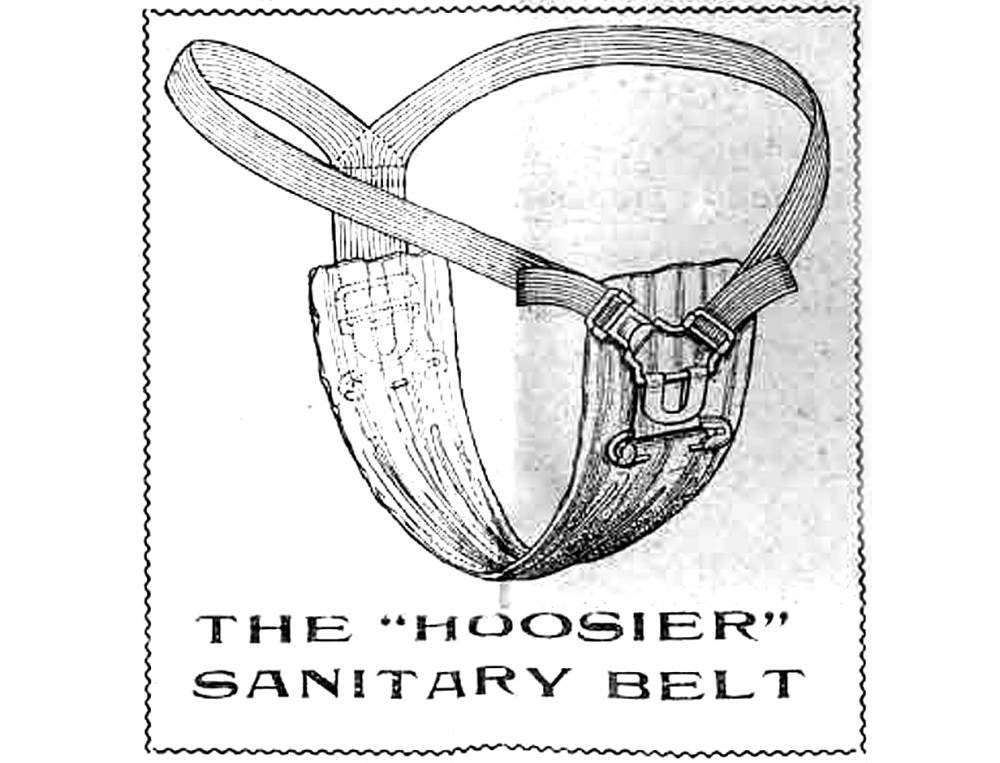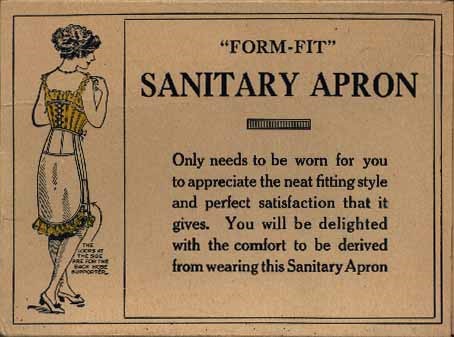The Journey from Rags to Pads
Even before a man and woman traversed earth, the female species menstruated. Menstruation is something which isn’t discussed very openly in our society even today. And history is no different, with little mention of women menstruating or how they tackled menstruation.
Hippocrates mentions women bleeding a wombful of blood every month. But how they lived with this monthly cycle or what they used is not easily known. Different cultures differntly ascribed menstruating women. While some viewed it as magical with healing powers, on the other hand some thought of it as a curse or punishment.
The Egyptians, as mentioned in the Ebers Papyrus, a compilation of medical texts, believed that menstrual blood had medicinal use. The laws of Niddah were followed in ancient times by the Hebrews wherein women were secluded for 7 days till they bled. But not much is written in history about what women used to clean off the menstrual blood. Vague mention of washable rags or papyrus or wood wrapped in lint have been noted.
The medieval times were no different, with mainly rags being used. But this period saw rise in stigma and shame associated with periods. Women took great efforts to hide their blood and even wore sweet scented herbs around their necks or waists in order to mask the pungent odour of blood.
The modern era still saw women mainly use washable pads or rags of cloths made of different absorbent material. At that time public facilities had incinerators where these pads could be burnt while at home water with sodium bicarbonate was used to wash away the stains.
1879 was a time where the shame and stigma with bleeding increased as bleeding into ones clothes was deemed unhealthy and unsanitary. “It is completely disgusting to bleed into your chemise, and wearing that same chemise for four to eight days can cause infections,” was written by a German doctor in the book Health in the House. It is said that Bristish Medical Journal around this time published a report on use of intravaginal tampon-like device.

From the late 1800 to until 1920s this Hoosier Sanitary Belt was used and women used absorbent cloth on this.
The Sanitary Apron was another such device used in 1800s for soaking the menstrual blood.

1888 saw the birth of the first disposable pad which stemmed from the creation of pads for wounded soldiers by Ben Franklin. The first commercially available pad in the States was the Listers Towel by Johnson and Johnson in 1888. Hartmans Towelletes were also similar pads made of absorbed material available in the UK.

Source: https://caasbrey.com/2017/08/36/
Dr Earle Haas in 1929 first developed the tampon. This discovery was based on one of his friends using an intravaginal sponge to soak up blood.
1980 was the time of advent of the adhesive sanitary napkin we use today. Pads like Kotex used wood pulp which was highly absorbent and as time has gone by we have come up with variations of this pad with increased absorbent capacity and thinner dimensions and the concept of wings to help it stay in place.

Source: https://www.pinterest.com/pin/316377942543587932/

A brief timeline of menstrual hygiene products
Despite of menstruation being such an ancient phenomenon, the stigma and shame associated with it still prevails. Indian myths that women are impure when they bleed, women not being allowed to enter temples or kitchens, not allowing them to touch pickles is still seen even in urban areas. It’s widely believed that women give out an odour which spoils the preserved food. The picture is much worse in villages, where young girls and women are still deprived of basic hygiene products and are ostracized when on their period.
All this has seemed to stem from ancient scriptures as well. For instance, the myth dates back to the Vedic times and is often been linked to Indra’s slaying of Vritras. For, it has been declared in the Veda that guilt, of killing a brahmana-murder, appears every month as menstrual flow as women had taken upon themselves a part of Indra’s guilt. A sense of impurity has been associated with menstruating women.
It’s appalling to see the sheer number of girls dropping out of school when they attain puberty and begin menstruating. Girls in remote village not only lack basic and clean sanitary services but till date, use the age-old rag. They hide when they menstruate, don’t go out to play or offer their prayers. Women teach other girls this way of life, unfortunately, as they themselves are brought up with this very mindset.
In India, around 355 million women menstruate every year, which adds to around 30% of the total population. In 2014, Dasra, an NGO put forth the findings of a study which stated that a gobsmacking 23 million girls drop out of school every year owing to a dearth of proper menstrual hygiene management facilities, including the availability of sanitary napkins and the scientific awareness about the whole process of menstruation. This study further highlighted that around 70% of mothers with menstruating daughters deemed menstruation as dirty and 71 per cent adolescent girls remained unaware of menstruation till menarche. A 2014 UNICEF report pointed out that in Tamil Nadu, 79 per cent girls and women were unaware of menstrual hygiene practices. The percentage was 66% in Uttar Pradesh, 56% in Rajasthan and 51% in West Bengal.
It’s dissuading as a nation, that on one hand we are aiming for the moon and stars, but on the other the women of this country still have to hide and question their need for basic hygiene. Gender disparity is further broadened by this very stigma associated with menstruation. Young girls still feel ashamed about the blood that flows between their thighs, which, to be honest, is a way to beautiful creation. Let us pledge to try, even by helping out one single girl, fight this stigma and menstrual poverty because at the end of they, these small drops do make up an ocean.
